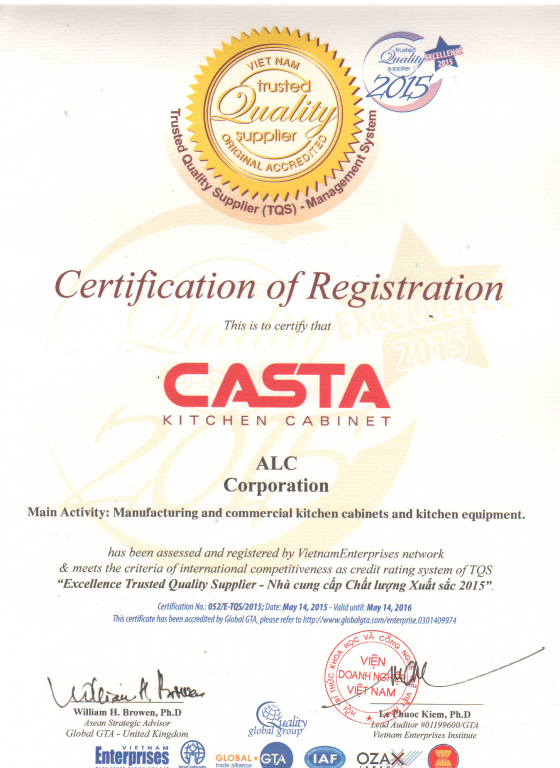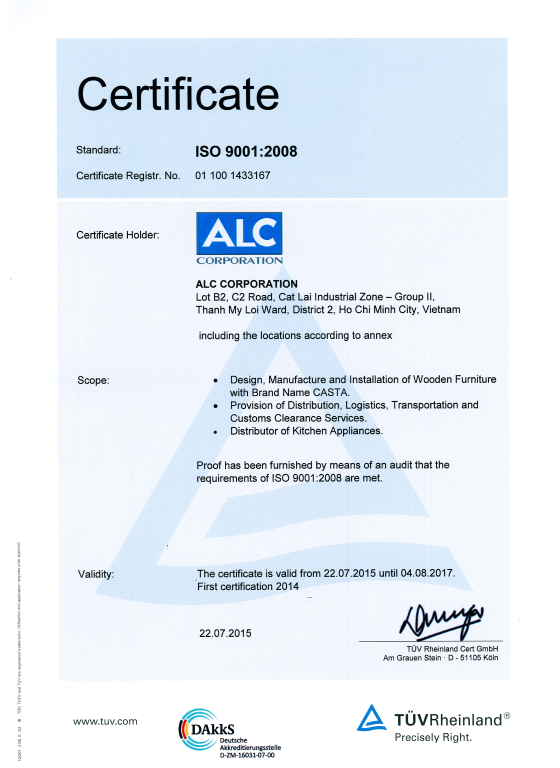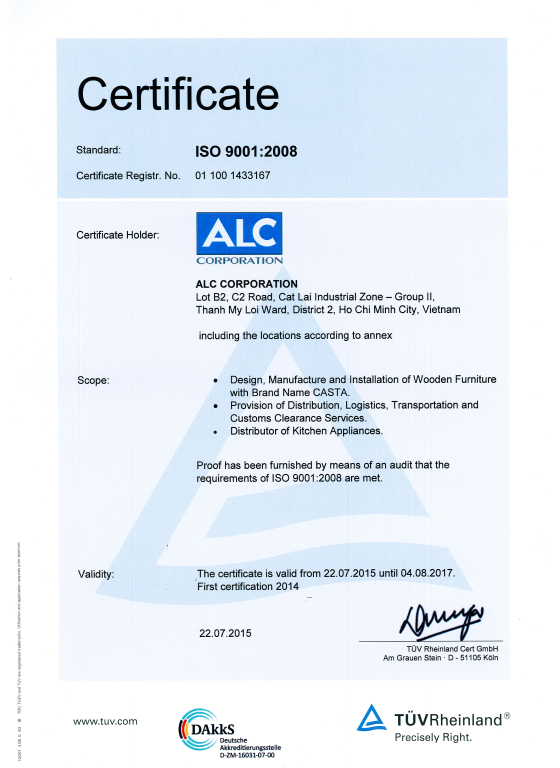Cabinet door style does more than define a kitchen’s look—it shapes installation workflows, influences cost, and determines how end users perceive value. Among the many flat panel cabinet door styles available in 2025, slab-style doors—commonly known as flat panel kitchen cabinets—have surged in popularity across multi-family housing, hospitality fit-outs, and urban residential projects.
In this comprehensive guide, we’ll explore why flat panel door cabinets are a top choice for contractors and brands, examine key styles of flat panel cabinet doors, compare them to shakers, and offer actionable insights on specification, sourcing, and installation.
Table of Contents
1. Why Cabinet Door Style Matters in Modern Projects
1.1 Visual Impact
The cabinet door is the most prominent element in any kitchen design, instantly conveying the project’s aesthetic direction. Choosing among flat panel cabinet door styles—from seamless slab doors to subtly textured veneers—can transform a space from classic to cutting-edge. In open-concept layouts, sleek flat panel kitchen cabinets draw the eye without breaking sightlines, while statement slab finishes can anchor a focal wall or island.
1.2 Cost & Efficiency
In large-scale builds, efficiency drives profitability. Flat panel cabinet door styles streamline production: slab doors require a single CNC routing pass for the face and a fast edge-banding step, eliminating time-consuming profiling or rail-and-stile cuts. This reduction in machining operations directly lowers labor costs and accelerates lead times, making flat panel door cabinets an economical choice for contractors and brands targeting bulk orders.
1.3 Maintenance & Durability
Simplified door profiles mean fewer edges and grooves for dirt, grease, and dust to collect. Flat panel cabinet door styles with non-porous finishes—such as UV-cured lacquers or laminated surfaces—stand up to heavy cleaning routines, outlasting ornate designs where residue hides in recessed details. This ease of maintenance not only extends cabinet life but also reduces long-term service calls for commercial and high-traffic residential installations.
Learn more: Industrial Cabinets Made in Vietnam: Durability and Functionality for Demanding Applications
1.4 Market Appeal
Minimalism continues to dominate design trends, and the data shows it: a 30 % increase in 2024 bids specifically requesting styles of flat panel cabinet doors for multi-family housing, hospitality projects, and co-working spaces. The appeal lies in the clean, adaptable look of slab doors, which seamlessly integrate with diverse materials—stone countertops, metal accents, or open shelving—and resonate with today’s design-savvy buyers.
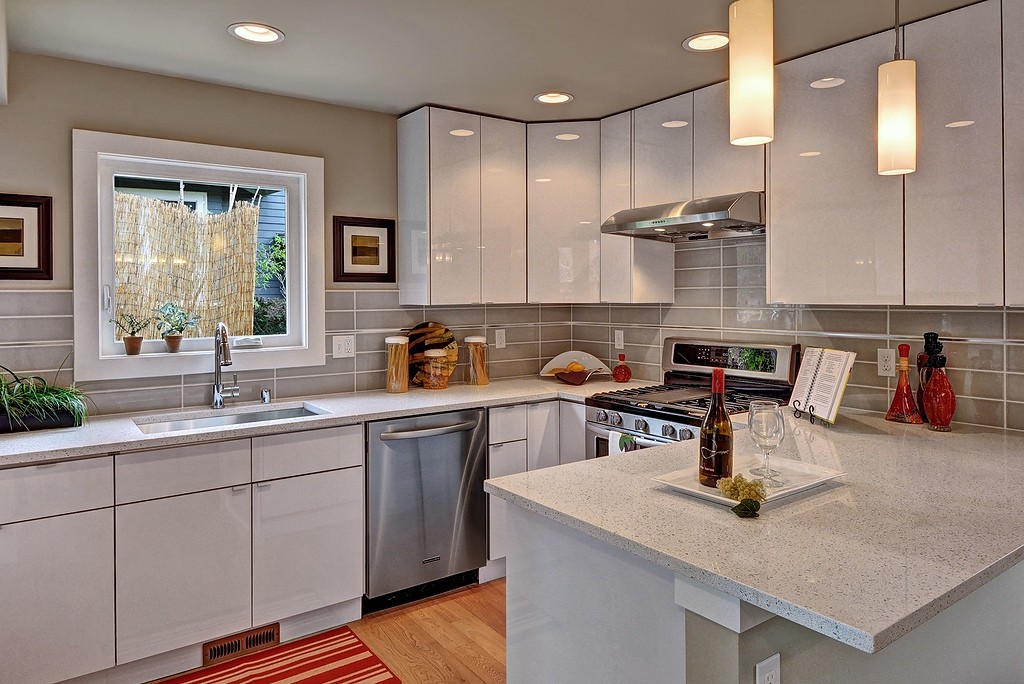
2. What Are Flat Panel Cabinet Door Styles?
2.1 Flat Panel Basics
Also known as slab doors, flat panel cabinet door styles offer an uninterrupted surface without raised rails or recessed centers, creating a clean, modern canvas:
- Definition & Design: Slab doors present a uniform façade—ideal for handle-less or integrated-pull looks that emphasize horizontal and vertical lines.
- Material Varieties:
- MDF (Medium-Density Fiberboard): Cost-effective, paint-ready core used in high-volume flat panel kitchen cabinets.
- Laminate & TFL: Thermally fused layers provide durable, low-maintenance finishes in a broad palette of colors and wood grains.
- Veneer: Real wood veneers (oak, walnut, ash) on a slab core marry natural warmth with minimalist form.
- Solid Wood: Premium slabs in maple, cherry, or alder for high-end flat panel cabinet door styles that age gracefully.
- Finish Options:
- Ultra-Matte Paint: Soft-touch surfaces in trending neutrals—perfect for Japandi or Scandinavian schemes.
- High-Gloss Acrylic/UV: Reflective panels that amplify light in small urban kitchens and hospitality suites.
- Textured Melamine: Scratch-resistant wood-grain replicas for contract-grade durability.
2.2 Key Flat Panel Styles
While all slab doors share a fundamental simplicity, variations in treatment create distinct flat panel cabinet door styles:
- Pure Slab MDF: Edge-banded and painted, this ultra-minimalist style requires only one CNC pass—ideal for fast, cost-effective production.
- Veneered Slab: Real-wood veneers applied to a stable core deliver authentic grain patterns without the complexity of framed doors. Perfect for premium flat panel kitchen cabinets in multi-family and commercial builds.
- Gloss & Matte Slabs: High-gloss acrylic doors lend a futuristic vibe to Euro-style condos, while soft-touch matte lacquers provide a subdued, tactile finish for contemporary residential kitchens.
2.3 Where Flat Panel Cabinets Are Common
The versatility of flat panel cabinet door styles makes them a go-to across diverse project types:
- Multi-Family Housing: Uniform slabs speed up fabrication and installation, delivering consistent flat panel door cabinets across dozens of units.
- Hotels & Hospitality Fit-Outs: Durable, easy-clean flat panels in guest rooms, minibars, and vanity areas provide a sleek, maintenance-friendly solution.
- Retail & Commercial Interiors: Storage walls, display cases, and checkout counters in offices and boutiques benefit from the seamless look and scalable manufacturing of slab doors.
- Urban Residences & Studios: Space-saving, flat profiles integrate seamlessly into compact layouts and modular kitchens—maximizing storage without visual clutter.
3. Five Reasons Why Flat Panel Kitchen Cabinets Are Still in Style
3.1 The Minimalist Movement
Clean, minimalist interiors continue to dominate global design trends, and flat panel cabinet door styles sit at the heart of this aesthetic. A 2023–2024 survey showed a 25 % increase in demand for handle-less, seamless cabinetry across residential, multi-family, and hospitality projects—underscoring how flat panel cabinet door styles define today’s sleek kitchen palettes. Slab doors—whether in matte-painted flat panel kitchen cabinets or high-gloss finishes—epitomize the minimalist ethos found in Nordic, Japandi, and contemporary spaces. As such, these flat panel cabinet door styles remain a top choice for designers and contractors aiming to deliver clean lines, uncluttered surfaces, and an effortlessly modern feel.
3.2 Ease of Maintenance
- Cleaning Efficiency: With no grooves or recessed profiles to trap grease, flat panel door cabinets clean in seconds—ideal for busy homes, cafes, and commercial-grade installations that require frequent wipe-downs.
- Durability Over Time: Smooth surfaces resist wear from repeated cleaning and disinfecting, reducing maintenance calls. Unlike framed or Shaker profiles, flat panel cabinet door styles require no extra sealing or trim upkeep, ensuring long-term performance in both residential and hospitality settings.
- Consistent Finish: The uniform face of flat panel door cabinets prevents finish breakdown in high-traffic zones, keeping kitchens looking showroom-fresh for years.
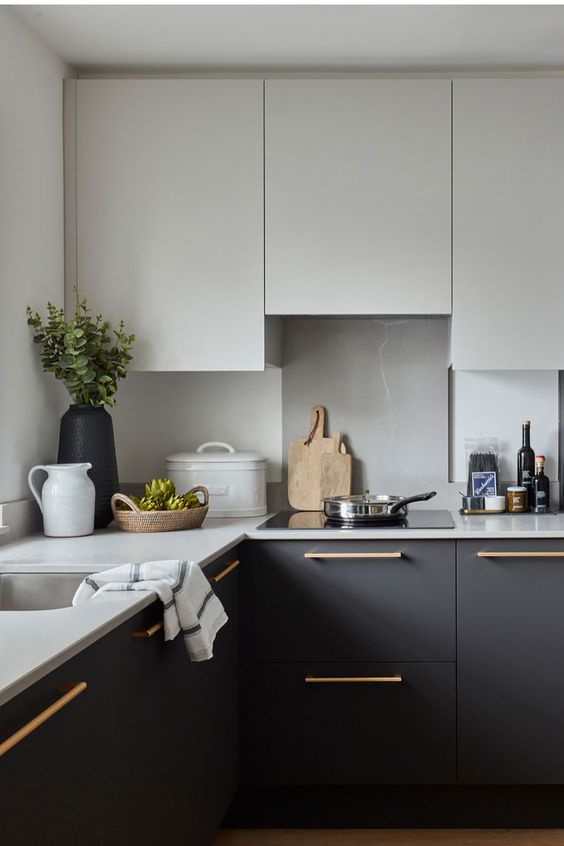
3.3 Cost-Effectiveness for Bulk Builds
- Machining Efficiency: Flat panel kitchen cabinets need only one CNC pass for door cutting and a second for edge-banding, reducing cycle times by up to 30 % compared to recessed-panel doors. This streamlined workflow accelerates large-scale production runs of flat panel cabinet door styles.
- Material Savings: Whether executed in painted MDF or thermofoil laminate, flat panel cabinet door styles typically cost 15–20 % less per door than Shaker-style assemblies—significantly lowering raw material expenses on multi-unit developments.
- Labor Reduction: Fewer assembly steps translate into labor savings of up to 25 % on production lines, making flat panel door cabinets a value-engineered solution for volume-focused contractors and brands.
3.4 Finish Versatility
- High-Gloss Acrylic & UV Lacquer: Flat panel cabinet door styles in mirror-like acrylic or UV-cured lacquer elevate condominiums and luxury apartments, bouncing light around compact spaces and creating an illusion of greater volume.
- Textured Melamine & TFL: For contract-grade durability, textured melamine flat panel cabinet door styles mimic authentic wood grains while resisting scratches and stains—perfect for retail fixtures and break-room installations.
- Painted MDF: Unlimited color palettes empower brands to specify signature flat panel cabinet door styles in custom hues—from jewel-tone blues to warm neutrals—ensuring each kitchen line aligns with brand identity and project mood boards.
3.5 Branding & Customization
- Scalable Custom Runs: Adjust slab thickness, integrate laser-etched logos, or specify beveled edge treatments at scale—making flat panel cabinet door styles a versatile canvas for brand storytelling and design differentiation.
- Private Label Opportunities: Furniture brands and cabinet manufacturers can offer cohesive flat panel door cabinets under their own labels, simplifying marketing and strengthening brand recognition across residential and commercial portfolios.
- Consistent Quality: CNC-driven production ensures uniformity in every flat panel kitchen cabinet, with each door meeting exacting dimensional and finish standards—critical for national retailers and multi-site developers.
By leveraging these five advantages—minimalist appeal, easy upkeep, cost savings, finish flexibility, and branding potential—contractors, cabinet brands, and developers can confidently specify flat panel cabinet door styles that will remain in vogue for 2025 and beyond.
4. Shaker Style Cabinets vs. Flat Panel: Which Is More Popular in 2025?
Comparing flat panel cabinet door styles with shaker profiles provides clarity for specifiers weighing budget, aesthetics, and production demands. Below is an expanded side-by-side comparison:
| Feature | Flat Panel | Shaker Style |
| Design | Minimalist, smooth slab—no rails or stiles, ideal for seamless flat panel cabinet door styles | Framed door with recessed center—classic, versatile look |
| Cost | Lower—requires fewer machine hours and no profiling, reducing labor and tooling costs | Higher—additional profiling, tenon-and-mortise joints, and assembly steps increase cost |
| Cleaning Ease | Very easy—flat surface resists grease buildup and wipes clean in seconds | Moderate—grooves collect dust and grease, requiring more frequent detailing |
| Trend | Growing—favored in urban, modern builds, multi-family housing, and hospitality fit-outs | Stable—enduring in transitional, farmhouse, and high-end custom homes |
| Best Use Case | Contemporary, multi-unit developments, streamlined commercial interiors | Custom residential kitchens, heritage-style homes, premium remodels |
| Lead Time | Short—CNC-optimized cutting and flat panel door cabinets flat-pack friendly | Longer—profiling and frame assembly add production time |
Alt image: Side-by-side view of a matte white flat panel cabinet door and a classic shaker style door.
Insight: In 2025, debates over shaker style cabinets vs. flat panel often hinge on project scale and budget. Flat panel cabinet door styles win on speed, cost, and minimalist appeal—making them the go-to for large multi-unit and hospitality projects. Shaker doors, with their timeless framed look, continue to resonate with luxury-market clients seeking tradition and handcrafted detail.
Whether you lean into the streamlined efficiency of slab doors or the warm familiarity of shaker profiles, understanding these dynamics ensures your next project balances style, cost, and performance
5. Top 4 Styles of Flat Panel Cabinet Doors (With Finish Options)
Exploring the diversity of flat panel cabinet door styles helps contractors and brands tailor offerings for any project, from budget-friendly apartments to luxury developments. Below are four leading slab door variations, each with unique finish options and application tips.
5.1 Matte Painted MDF Slab
Overview:
Matte-painted MDF slab doors feature a super-smooth, non-reflective finish that absorbs light and creates a soft, tactile appearance. Available in trending hues—sage green, charcoal gray, dusty blue, and crisp off-white—these flat panel kitchen cabinets deliver a sophisticated yet understated look. The lack of sheen highlights clean lines, underscoring the minimalist appeal of flat panel cabinet door styles.
Benefits & Considerations:
- Durability: High-build primers and low-VOC waterborne paints provide resistance to fingerprints and mild abrasion.
- Customization: Easily mixed and matched with accent colors on islands or open shelving for dynamic two-tone designs.
- Cost Efficiency: MDF cores cost less than solid wood or lacquered acrylic, reducing project budgets without sacrificing style.
Use Case: Scandinavian and modern minimalist kitchens where matte simplicity complements natural wood accents and stone countertops.
5.2 High-Gloss Acrylic or UV Lacquered Slab
Overview:
High-gloss acrylic and UV-lacquered slab doors boast a mirror-like sheen that reflects light, making small or dark kitchens feel brighter and more spacious. These flat panel door cabinets epitomize contemporary Euro-style kitchens, with surfaces that resist moisture and clean easily with a soft cloth. Acrylic panels can be delivered in bold jewel tones—emerald, sapphire, or ruby—while UV lacquers provide consistent color depth across large expanses.
Benefits & Considerations:
- Reflectivity: Amplifies natural and artificial light, enhancing perceived room size.
- Scratch Resistance: High-quality acrylic withstands everyday wear; UV lacquers cure to form a hard, durable surface.
- Edge Clarity: Polished edges create a seamless slab look, reinforcing the styles of flat panel cabinet doors trend.
Use Case: European-style apartments, boutique hospitality suites, and urban lofts seeking a high-end, reflective focal point.

5.3 Textured Melamine / Thermally Fused Laminate (TFL) Slab
Overview:
Textured melamine or TFL slabs mimic the look and feel of real wood grain, offering warmth and natural character with contract-grade durability. These styles of flat panel cabinet doors come in oak, ash, hickory, and walnut patterns, embossed to match the grain direction and tactile texture. The factory-applied wear layer resists scratches, stains, and heat—ideal for heavy-use environments.
Benefits & Considerations:
- Cost-Effectiveness: One-step production process reduces material and labor costs compared to veneered or painted finishes.
- Maintenance: Easy to clean with mild detergent; no sealing or refinishing needed.
- Uniformity: Consistent pattern across panels eliminates color variation issues common in solid wood.
Use Case: Contract kitchens in student housing, healthcare facilities, and commercial break rooms where durability and low maintenance are priorities.
5.4 Veneered Flat Panel Doors
Overview:
Veneered slab doors pair a real wood veneer—oak, walnut, ash, or maple—with a stable MDF or plywood core. The result is a premium flat panel cabinet door styles solution that showcases natural grain and depth without the movement issues of solid wood. Veneers can be bookmatched for continuous patterns across tall cabinets or random for a more organic look.
Benefits & Considerations:
- Aesthetic Richness: Real wood character and warm tones elevate multi-family and high-end residential projects.
- Stability: Engineered cores prevent warping and expansion, maintaining the slab’s flat integrity.
- Sustainability: Thin veneer layers use less hardwood, supporting eco-friendly sourcing.
Use Case: Luxury multi-family developments, custom residential kitchens, and boutique hospitality where the tactile quality of real wood complements minimalist slab profiles.
By understanding these four flat panel cabinet door styles—matte MDF slabs, high-gloss acrylic, textured melamine, and veneered doors—contractors and brands can specify the perfect slab solution for any project, balancing cost, durability, and aesthetics.
6. Are Flat Panel Cabinets a Smart Choice for Contractors & Brands?
6.1 Bulk Orders, Speed & Customization
- CNC & Automation: Among flat panel cabinet door styles, slab doors excel in automated production. Their uniform profile allows faster CNC router passes using fewer bits, delivering consistent cuts with minimal tool changes—perfect for high-volume flat panel kitchen cabinets lines.
- Short Lead Times: Simplified machining and assembly shrink lead times by up to 30% compared to framed doors, enabling contractors to meet tight construction schedules and multi-site rollouts without sacrificing quality.
Learn more: Lead Times & Supply Chain Resilience: Navigating Potential Disruptions
- Repeatability & Branding: Custom slab dimensions, edge profiles, and finish codes can be programmed once and replicated across hundreds of doors—ensuring each batch of flat panel door cabinets aligns with your brand’s signature look.
6.2 Aligning with Today’s Design Trends
- Minimalist Appeal: The clean lines of flat panel cabinet door styles seamlessly integrate into urban apartments, co-living developments, and retail environments, reinforcing the modern minimalist movement.
- Transitional Flexibility: Despite their contemporary roots, slab doors pair beautifully with natural stone countertops, metal hardware, and mixed-material island units—making flat panel kitchen cabinets a versatile choice even in transitional or eclectic designs.
- Color & Texture Trends: Contractors can select from trending flat-panel finishes—matte jewel tones, subtle wood-grain textures, or high-gloss neutrals—to keep projects on the cutting edge of design.
Learn more: Kitchen cabinet trends
6.3 Optimized for RTA Packaging & Assembly
- Flat-Pack Friendly: Flat panel door cabinets stack more efficiently in flat-pack kits, reducing freight volume by up to 20% versus framed doors. This compact packaging lowers shipping costs and minimizes the risk of door damage in transit.
- Installation Efficiency: With fewer parts and no door-frame assembly required, onsite labor time drops significantly. Installers simply hinge slab doors directly to cabinet boxes—streamlining installation and cutting labor costs.
- Consistent Quality: Pre-assembled slab doors arrive ready to hang, each one matching the precise flat panel cabinet door styles specifications agreed upon in CAD/BIM designs—eliminating field modifications and rework.
7. Why Choose Casta Cabinets for Flat Panel Cabinets
When it comes to sourcing flat panel cabinet door styles at scale, reliability, precision, and customization are non-negotiable. Casta Cabinetry delivers on all fronts, making them the ideal partner for contractors, cabinet brands, and furniture companies.
7.1 Sophisticated Production in Vietnam
- European CNC Lines: Casta’s factories leverage HOMAG, Biesse, and SCM routers, achieving cutting tolerances as tight as ±0.1 mm. This precision ensures every slab door meets exact flat panel cabinet door styles specifications—no visual or functional inconsistencies.
- Automated Lacquering & Edge Banding: Integrated spray booths and edge-banding robots produce uniform high-gloss, matte, or textured melamine finishes on flat panel kitchen cabinets. Consistent surface quality across thousands of doors reduces onsite touch-ups and accelerates installation.
7.2 Customization Until Approval
- CAD/BIM Collaboration: Through 3–5 interactive design rounds, your team can refine slab dimensions, handle cut-outs, integrated pulls, and edge details. Every nuance of your chosen styles of flat panel cabinet doors is finalized before mass production, eliminating surprises.
- OEM/ODM Support: Whether you need private-label flat panel door cabinets or branded collections, Casta tailors door color, core material (MDF, plywood, HDF), and veneer options to match North American design trends and client preferences.

Learn more: Casta’s custom cabinets
7.3 Certified, Safe & Sustainable
- Comprehensive Certifications: All slab doors—whether laminated, painted, or veneered—are certified to CARB Phase 2, E1 (EU), and FSC Mix-Credit standards. This guarantees low-VOC emissions and responsible forestry practices, essential for specifying flat panel kitchen cabinets in schools, healthcare, and residential environments.
- Health & Environmental Assurance: Independent lab testing confirms formaldehyde levels and VOC emissions well below regulatory limits, giving you confidence that your flat panel cabinet door styles are both safe and sustainable.
Learn more: Casta’s ISO-Qualified Cabinet Certification: Setting the Gold Standard for Quality and Reliability
7.4 Export-Ready & Delivery Support
- Optimized Lead Times: With door-to-port schedules of 25–40 days, even large orders of flat panel door cabinets arrive on time—critical for coordinated multi-site rollouts and just-in-time delivery strategies.
- Protective Packaging: Flat-pack kits are designed to maximize container utilization while shielding delicate slab edges with reinforced corner guards and custom foam inserts. This minimizes freight damage and reduces replacement costs.
- Complete Documentation: Every shipment includes phytosanitary certificates, material test reports, customs paperwork, and real-time tracking updates. Casta’s export team provides timely communication and resolves any logistical issues within 24 hours, ensuring your flat panel cabinet door styles reach you without delay.
Learn more: Casta’s Outstanding International Projects

8. Conclusion: Flat Panel Kitchen Cabinets Remain in Style for 2025
Flat panel kitchen cabinets offer a winning combination of minimalist aesthetics, cost-efficiency, and production speed that resonates with 2025’s urban, multi-unit, and hospitality markets. With a range of styles of flat panel cabinet doors—from matte painted MDF to high-gloss acrylic and wood veneers—projects large and small can benefit from streamlined manufacturing and versatile finishes. While shaker style cabinets vs flat panel debates continue, the slab door’s ease of cleaning, affordability, and scalability ensure it stays at the forefront of modern cabinet design. Partner with a specialist like Casta Cabinetry to leverage precision engineering, full certification, and reliable export support—delivering flat panel door cabinets that meet both aesthetic aspirations and commercial imperatives.
9. FAQ Section
Are flat panel cabinets going out of style?
What’s the difference between flat panel and shaker cabinets?
Can flat panel doors be customized?
Are flat panel cabinets suitable for kitchens?
Does Casta offer OEM production for flat panel cabinets?
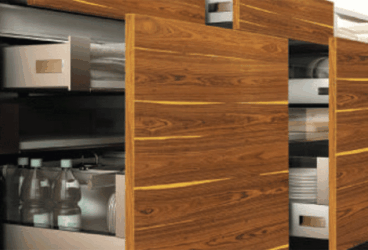
MDF vs Plywood for Kitchen Cabinets – Which is Better?...
MDF vs Plywood for kitchen cabinets is one of the most important decisions contractors and furniture brands must make wh...
11/14/2025 | David Nguyen
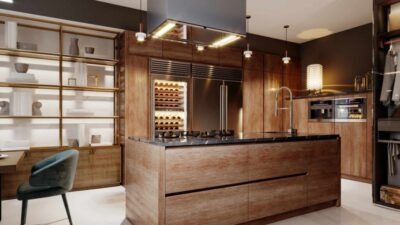
Plywood Kitchen Cabinets: Pros and Cons Explained for Contra...
Plywood kitchen cabinets are now one of the most preferred options in modern kitchen manufacturing, combining durability...
11/12/2025 | David Nguyen
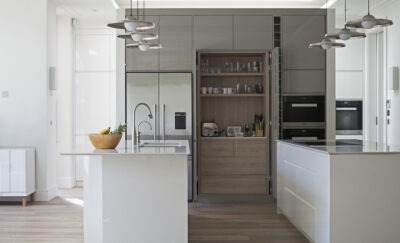
Best Italian Kitchen Cabinets: Modern Design, Precision Craf...
Italian kitchen cabinets represent the gold standard in modern kitchen design — celebrated for their craftsmanship, slee...
10/29/2025 | David Nguyen
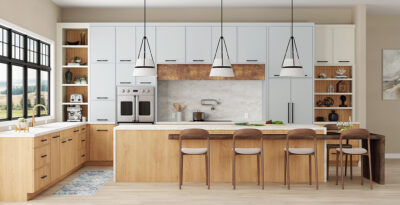
European vs American Kitchen Cabinets: Key Differences &...
European vs American kitchen cabinets is a core decision for anyone specifying cabinetry for modern buildings or homes. ...
10/27/2025 | David Nguyen
Contact us
Casta is always ready to listen and answer all customers' questions
